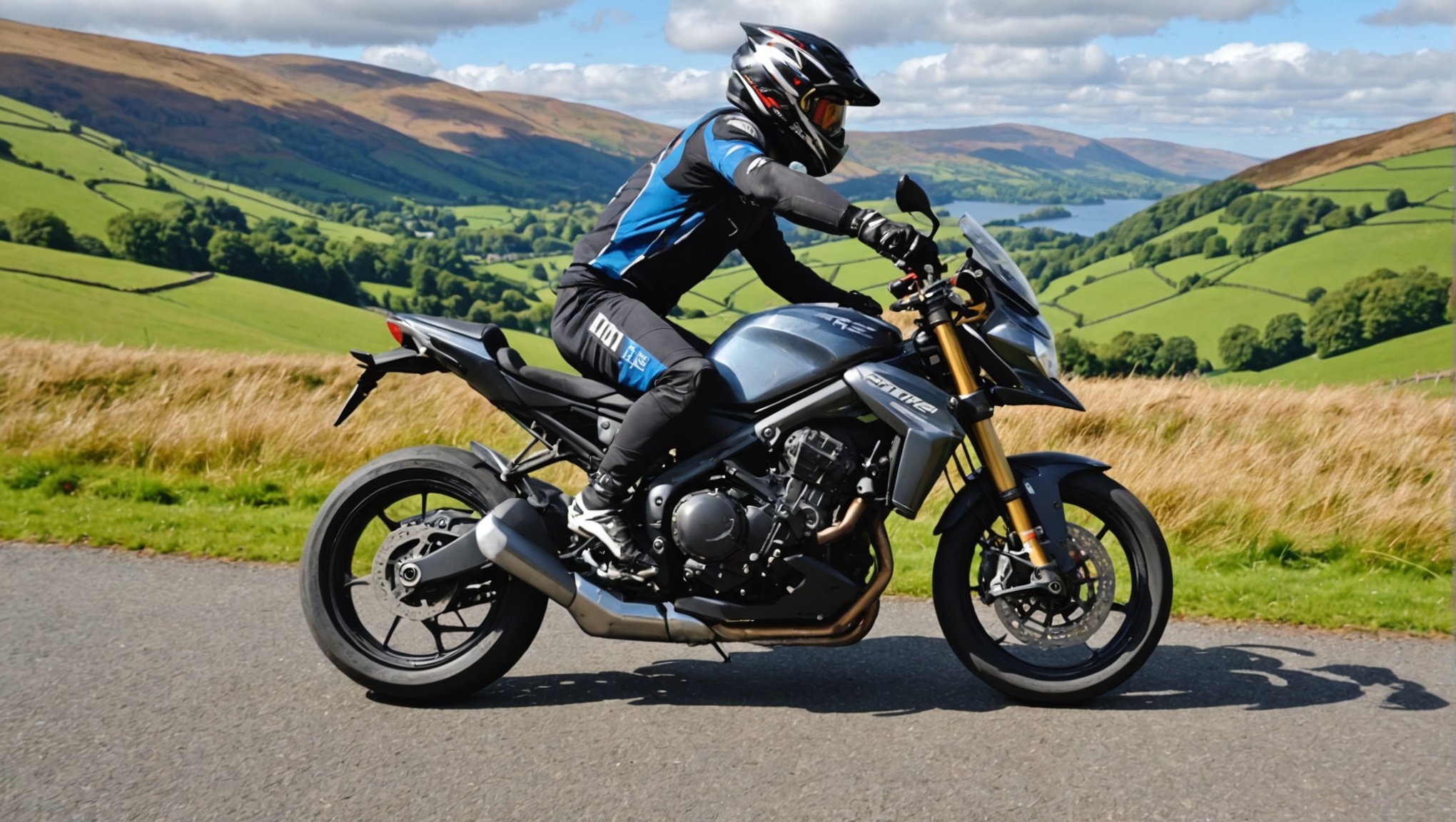Understanding Gear Ratios for Sport Bikes
Gear ratios are crucial in enhancing sport bike performance, especially when tackling varied terrains. They determine how efficiently a cyclist can translate pedalling into forward motion. Essentially, gear ratios are dictated by the relative size of the chainrings at the front and the cogs at the rear. A lower ratio is beneficial for climbing hills, requiring less energy per pedal stroke, whereas a higher ratio is ideal for speed on flat surfaces.
When navigating steep hills, a cyclist relies heavily on an appropriate gear ratio. A lower gear ratio allows for increased cadence, the rate at which a cyclist is pedalling, which translates to reduced strength effort per pedal turn. Hence, adjusting these allows for optimal energy conservation and efficiency during strenuous climbs.
Have you seen this : Installing a Sport Bike Tire Pressure Monitoring System: A Step-by-Step Guide for Real-Time Pressure Insights
Understanding key mechanical terms enhances cycling efficiency. The chainring is the large gear attached to the pedals, affecting the input side of the gear equation. The cogs, smaller gears at the rear wheel, control the output. Knowing how to adjust these elements enables cyclists to customise their sport bikes for peak performance across various terrains. Balancing these components according to individual riding style is vital for achieving the desired sport bike performance.
Selecting the Optimal Gear Ratio for Hill Climbing
Choosing the optimal gear selection for hill climbing can significantly impact your cycling performance. It involves understanding several key factors. Firstly, consider the terrain’s gradient, as steeper hills in areas like the Lake District demand different gear settings than gentler slopes. The goal is to maintain a balance between power output and cadence to ensure efficiency and reduce fatigue.
In parallel : Enhance Your Night Riding Experience: Tips for Boosting Visibility on Your Sport Bike in the UK
When tackling varying hill grades in the Lake District, recommended gear ratios will vary. For steeper inclines, lower gears are ideal as they allow for increased torque, enabling you to ascend without exhausting too much energy. Conversely, less steep gradients might require higher gears to facilitate smoother cycling and maintain momentum.
Balancing power output and cadence is crucial during climbs. By switching to a lower gear, cyclists can increase their cadence, allowing for a more consistent energy expenditure. This practice helps avoid exhausting the legs too soon, thereby improving overall cycling performance on challenging ascents.
In summary, mastering hill climbing techniques through thoughtful gear ratio selection can significantly enhance a cyclist’s ability to conquer tough hills efficiently. By considering both the hill gradient and the balance between power and cadence, one can optimise their cycling experience.
Terrain Challenges in the Lake District
Cycling through the Lake District offers an exhilarating experience. However, for optimal fun and performance, understanding its terrain challenges is essential.
Terrain Characteristics
The Lake District is known for its varied terrain, which includes a combination of steep climbs and rolling hills. These elevation changes require cyclists to carefully analyze the terrain. The rugged surface, often littered with rocks and gravel, demands sturdy and reliable equipment.
Effect on Gear Ratio Selection
Given the climbing challenges, the terrain significantly affects gear ratio selection. On steep climbs, a lower gear ratio provides better control and eases the physical strain. Begin with a low gear to maintain a steady cadence and over flat sections, shift to a higher gear for more speed while conserving energy.
Adjustments for Weather Conditions
Weather modifications are crucial when biking in the Lake District. Rain can make trails slippery and challenging. Cyclists should adapt gear early to account for potential gusts or downpours. Wear waterproof gear to stay dry and adjust your riding style to maintain traction on wet surfaces. Fine-tuning your bike setup will help in overcoming these challenges effectively.
Expert Recommendations for Gear Ratios
Gaining an understanding of gear ratio expert insights can elevate your cycling experience, particularly when it comes to choosing the right sport bike gear recommendations. Data-driven insights from cycling professionals highlight the importance of selecting a gear ratio that aligns with your riding style and terrain. Consideration of comparative analysis provides clarity on how different gear ratios perform under varied conditions.
Diving into cycling advice from seasoned experts can shed light on the nuanced differences between gear ratios and their practical applications. For instance, a lower gear ratio might be beneficial for climbing steep hills, offering easier pedalling at the expense of speed. Conversely, a higher gear ratio can be advantageous for flat terrain and speed, demanding more energy from the rider.
Experts often conduct meticulous comparative analysis testing, examining user experiences alongside statistical data to offer well-rounded advice. Anecdotal evidence adds a personal dimension, capturing real-world scenarios where specific gear ratios have proven effective or lacking. To choose wisely, it is crucial to assess factors like your typical cycling environment, physical condition, and cycling aspirations.
These insights aim to not only simplify the decision-making process but also ensure that cyclists have a rewarding and efficient riding experience. Acknowledging expert recommendations empowers cyclists to make informed choices, tailored to individual needs and goals.
Practical Tips for Hill Climbing in the Lake District
Hill climbing in the Lake District presents unique challenges even for seasoned cyclists. Achieving optimal cycling performance begins with mastering efficient pedal strokes and strategic body positioning. Position your feet flush with the pedals; this angle maximises force transfer, ensuring each stroke propels you uphill smoothly. Keep your back straight and shoulders relaxed to maintain a balanced core, which aids in sustaining momentum.
Effective pacing is another critical hill climbing strategy. Starting too quickly can deplete energy reserves. Instead, maintain a steady rhythm adjusted to your stamina, allowing for a gradual yet persistent ascent. Synchronising breath control with pedal strokes is also favorable; inhale deeply through your nose, then exhale through your mouth in sync with upward pushes on the pedals. Such a pattern supports sustained endurance, crucial in traversing steeper inclines.
The Lake District’s diverse terrain offers natural aids if identified timely. Observing terrain features, like selecting paths with smoother surfaces or zigzagging on steep portions, can lessen the climb’s intensity. Moreover, using natural formations as windbreakers reduces resistance, providing a breathing opportunity during intense segments. Embrace these techniques to enhance performance and enjoy the picturesque surroundings during your rides.
Visual Aids and Resources
Navigating the challenging terrains of the Lake District requires strategic planning and understanding of cycling gear. Visual aids and resources can significantly enhance your cycling journey by providing critical insights into what gear to use and where to ride.
Gear Ratio Chart
Understanding the gear ratio is pivotal for efficient cycling, especially on climbs. A comprehensive gear ratio chart is an invaluable tool for cyclists. It illustrates the relationship between the front chainring and the rear cog, helping you to select the optimal gear for specific inclines. This knowledge allows cyclists to maintain an ideal cadence, reducing fatigue and increasing efficiency during challenging ascents.
Terrain Map of Lake District
A detailed terrain map of the Lake District can guide cyclists through various climbing routes, indicating difficulty levels and scenic vistas. Such maps highlight gradients, providing cyclists with prior understanding of the physical demands required. This ensures better preparedness, as you can select routes aligning with your skill level and endurance.
Links to Gear Reviews and Final Advice
Access to curated gear reviews offers the final piece in gearing up for the Lake District challenges. Expert opinions and tested reviews provide insights into the best equipment suited for these specific conditions. Resources, such as cycling charts, gear reviews, and advice, form a comprehensive guide, enabling cyclists to make informed decisions before embarking on their adventure.






